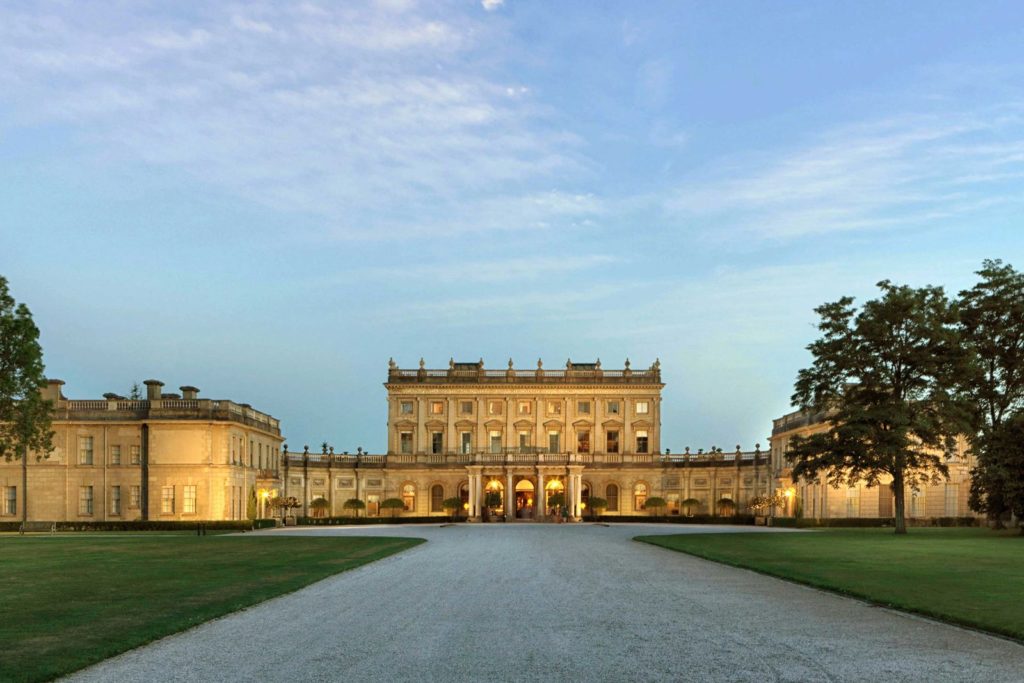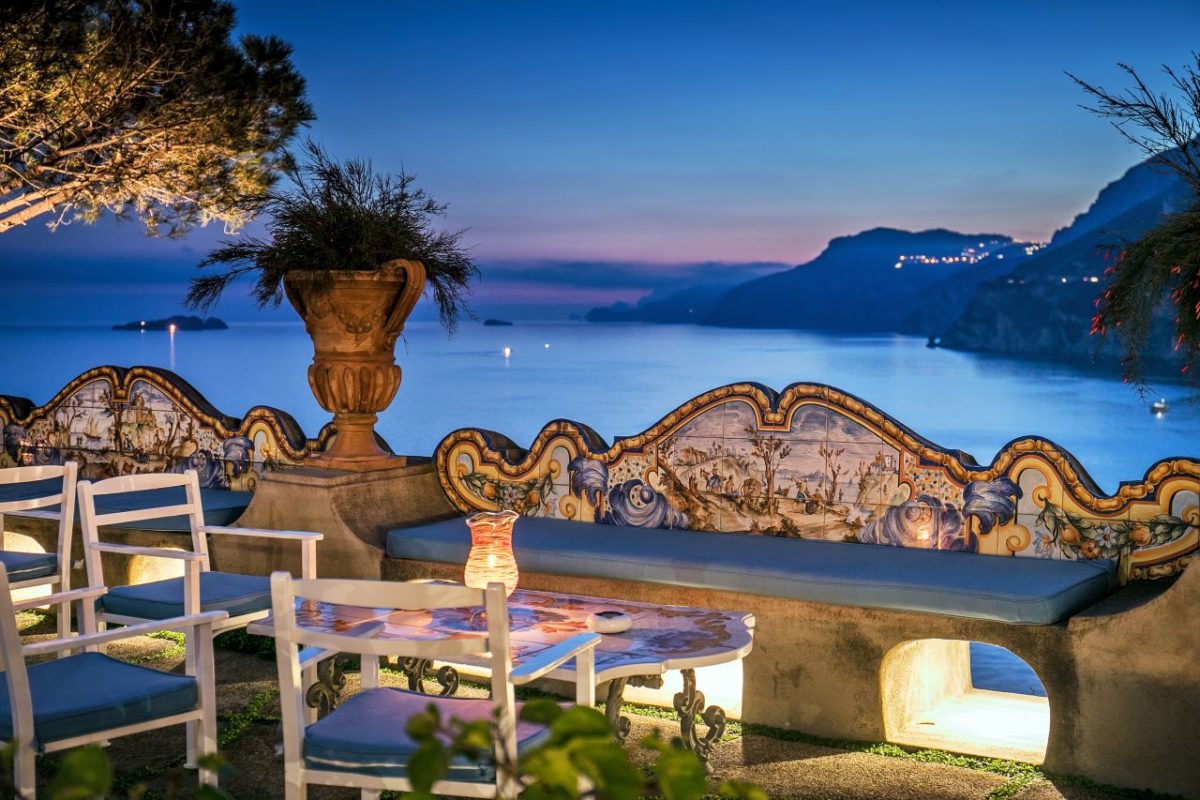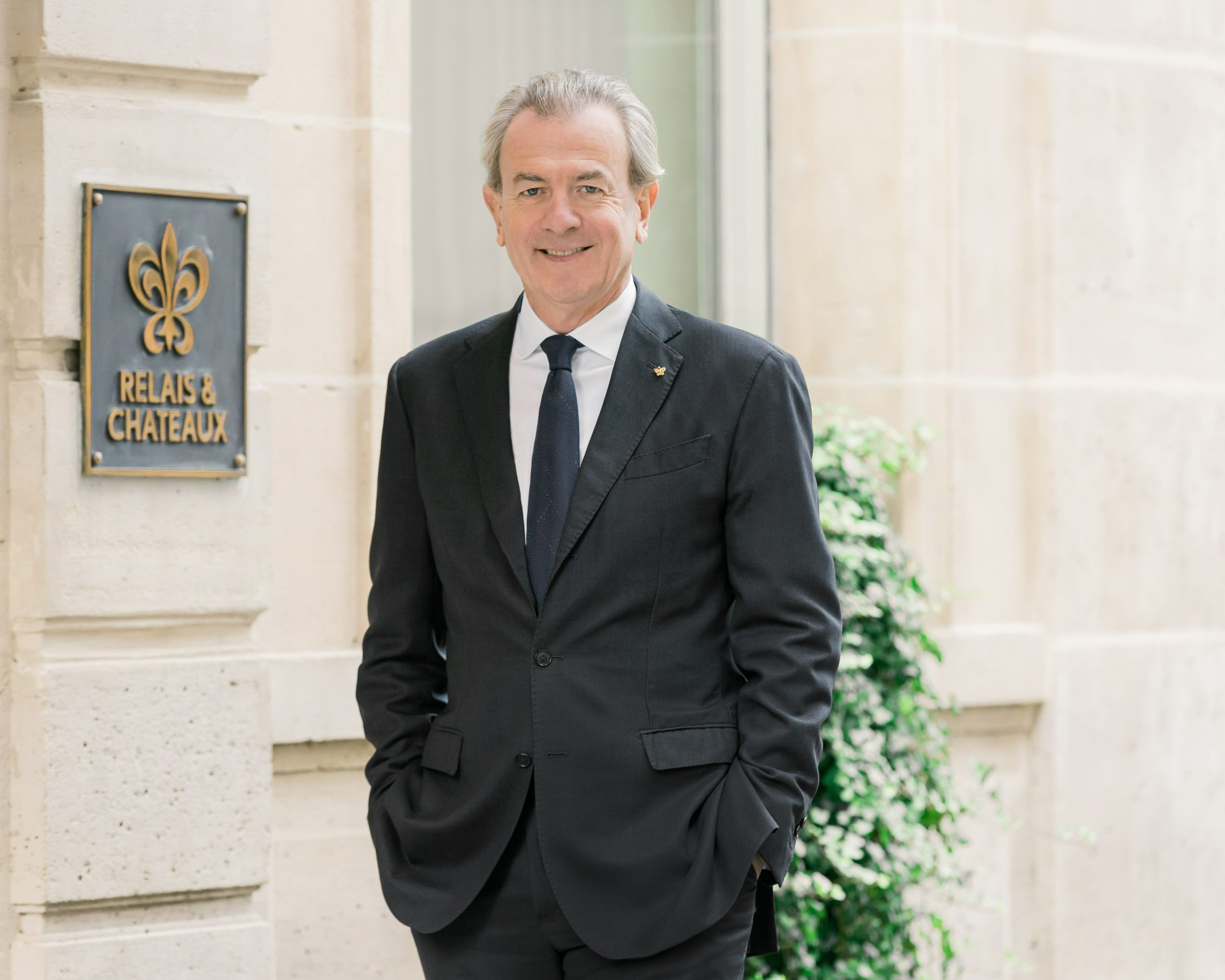By John O’Ceallaigh
About an hour from central London, Cliveden House in many ways feels like the archetypal Relais & Chateaux hotel. Dating from the 1600s, the grand heritage property is an architectural and aesthetic marvel – all intricate tapestries and glinting suits of armour – with a mottled, dramatic history that runs from a deadly duel brought on by a scandalous affair to a decadent turn as the home of the obscenely wealthy Astor family. Nowadays guests retire to rooms named after the Astors’ illustrious former party invitees, such as George Bernard Shaw, and might go for languid rides aboard classic boats along the Thames, which runs right by the property. The Cliveden Dining Room restaurant is ornate and proudly traditional; in a room overlooking sweeping lawns and a lush forest canopy, battalions of white-gloved waiters serve a menu that might include beef Wellington to share or light servings of velvety halibut.

But properties like Cliveden House, impressive though they are, don’t represent the full Relais & Chateaux story; after 17 years on the organisation’s board, its new president Laurent Gardinier wants guests to know that there’s more to the brand than grand old hotels set in imposing stately homes and castles. The collection’s 580 or so venues include about 100 restaurants, and even some sail boats. When we met at Cliveden last month for an elaborate Worlds Ocean Day dinner that focused on deep-sea sustainability, Laurent was keen to show that the organisation is continually evolving and innovating.
To illustrate the breadth of the collection, Laurent shows me Akelarre in Spain, “an amazing, modern design-led property in Spain. Relais & Chateaux properties need to be representative of the environment in which they’re in; that doesn’t mean they need to be old.”

About 500 different addresses apply to join R&C annually, of which approximately 25 might be accepted. With some other properties potentially being shed each year, there are suggestions that the portfolio might potentially top out at a round 600, (“plus or minus 10%”, according to Laurent), so the collection is potentially quite close to its capacity.


So, to be a member of R&C you don’t need to be old, but there are some rule-of-thumb generalities. I’m told most of the hotels are run by the owner him or herself; larger hotel groups that own many properties can feature no more than 10 of them within R&C; hotels tend to be fairly small, with an average of about 30 to 35 rooms, and they’re usually found outside of cities. Big emphasis is placed on the architecture, whatever its style, and they also assess how a business is integrated within its local community (be that through the opportunities that are created for staff, the focus given to sourcing produce locally, or other factors entirely). There are 500 touchpoints inspectors need to tick off to ensure each address passes muster, and 10 well-fed inspectors crisscross the planet globally to carry out quality checks on some 250 properties annually. It’s non-stop work given every member is reviewed every three years.

Laurent understands what the process is like as he’s long been subjected to it. With his family, he’s run a R&C hotel and restaurant for much of his working life. Like everyone else on the board, as president he was elected to his position, and Relais & Chateaux itself is a non-profit. He sees those factors as key points of distinction from the other hotel aggregators such as Leading Hotels of the World.
Also integral to the brand is its emphasis on gastronomy. When it came to fruition in France about 70 years ago, R&C initiated a focus on fine dining that has seen it become the largest gastronomic organisation in the world. Today it includes somewhere between 800 and 900 restaurants – it gets hard to keep count – and about 350 of them have Michelin stars. I’m not surprised by the figures: when I think of my own stays at R&C properties they’ve so often provided exceptional dining experiences. Back in Ireland, my homeland, I rate Cashel Palace Hotel and Park Hotel Kenmare as having the best hotel restaurants in the country – as it happens, they’re both with Relais.

Though I felt that former property, relatively new when I visited last year, was still finding its feet in other respects, Laurent lists Cashel Palace as one of his standouts – he’s loathe to use the word ‘favourite’ – from the portfolio, because of its homely feel and the period property’s finely tuned mix of heritage and modernity: “You just feel at home when you’re there, and its historic character is absolutely preserved. The balance is superb.” Also on his honours list is Esiweni Luxury Safari Lodge in South Africa, which “is not only one of the finest safari properties in the country, but also does so much to care for the surrounding community and the staff and their families.” Blackberry Farm in Tennessee has got it all: “the architecture, the food experience, the broader emphasis on gastronomy – it’s pure Relais and Chateaux.” In Italy, Il San Pietro di Positano, with its views of Sorrento, the Med and Capri, “is magical.” That said, “you also have some modest properties that absolutely fit our identity. It’s not about marble in the bathroom, it’s a matter of spirit.”

But why are so many of these hotels clamouring to be part of the collection in the first place? Employing 42,000 people globally, R&Cs’ members secure overall sales of approximately €2.8bn annually, their R&C fees might run from €7k-€10k annually for a restaurant, and generally come in at about €25k-30k for an average-sized hotel, or possibly up to €50k-€60k for a larger property. Hotel bookings made through the R&C website also incur a commission fee. Hotel bookings made through the R&C website often account for 10%-20% of a property’s revenue, and then there are more customers who book direct after being assured or influenced by the R&C affiliation. (During our seafood dinner at Cliveden, I met one prosperous couple who pretty much only ever stay at Relais properties; they were ready to reel off the names of scores of hotels they’ve visited over the decades.) If a property doesn’t pass quality checks and is removed from the portfolio it can represent a huge loss of revenue for the business concerned; the extrication process is often contested and can be quite complicated.
As for the organisation’s future, there are ambitions to extend its footprint beyond the 60 or so countries where the brand is found currently. Laurent is keen to establish a presence in Egypt and mentions and also mentions Tunisia, Turkey, Scandinavia, India and China; “Tel Aviv is an important gastronomic city.” Like his competitors, he has a team scouting the globe for appropriate properties. But really he’s keeping an open mind about where the next openings might be: “Wherever the hotel is, it just needs to be the best in the locality.”
You can peruse the entire Relais & Chateaux portfolio on its website.
LUTE is a luxury-travel consultancy and content agency that works with hotel groups, tour operators, tourist boards, airlines and more. You can learn more about LUTE here. LUTE also books luxury hotel rooms around the world, with discounts and benefits you won’t find online; email rooms@lute.co for more information. For frequent luxury-travel updates, follow LUTE and LUTE founder John O’Ceallaigh on Instagram.

